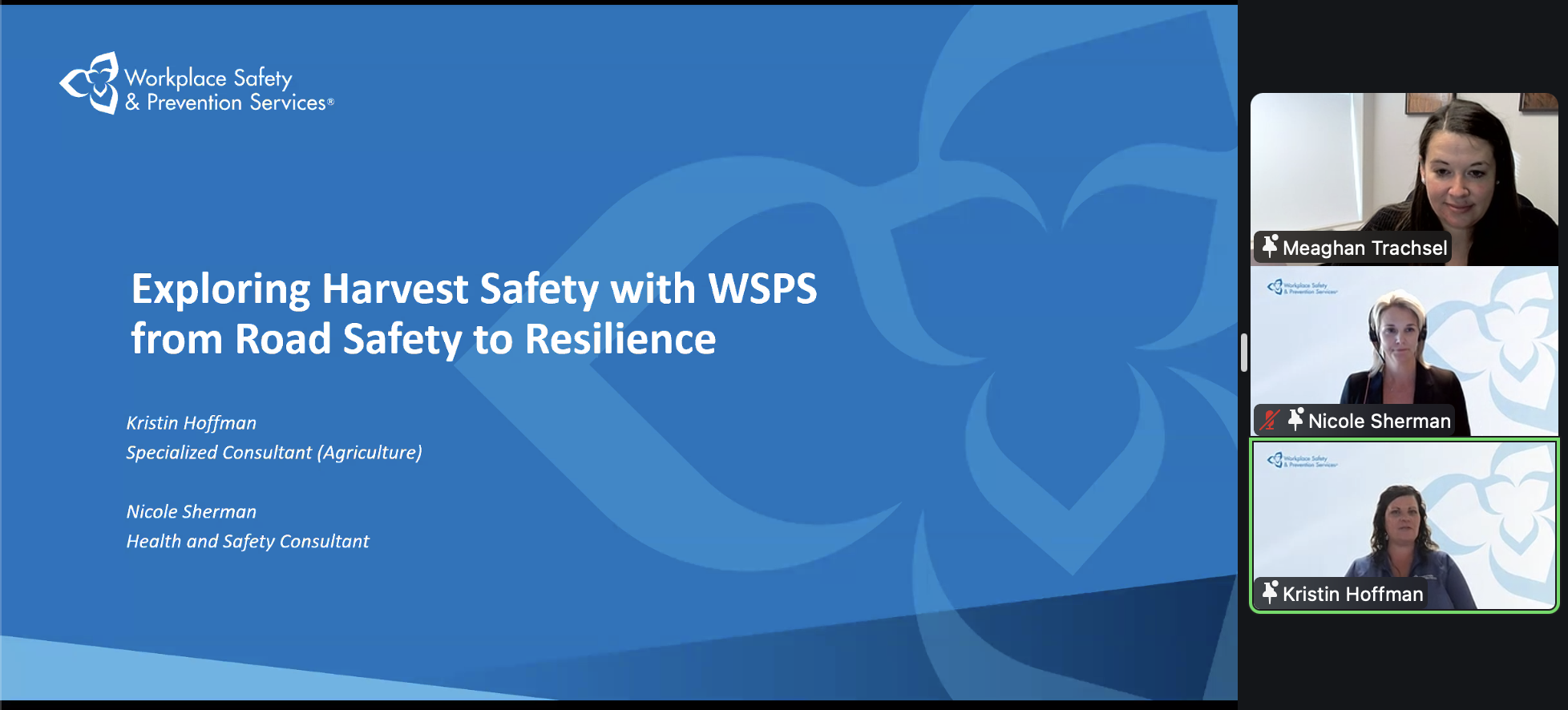Oct. 21 –– A strong performance by outside markets such as the energy sector, and a continued wet weather forecast for most of the grain belt regions in the U.S. and Canada, has helped propel grains upward with solid double-digit gains today.
Canola was unable to keep pace with beans as the Canadian dollar jumped back up a full cent today, closing up 1.07 cents at US96.26 cents, taking away some of the rally potential.
The U.S. dollar was down almost half a cent today.
Read Also

Tips for staying safe this harvest season
Kristin Hoffman of WSPS explains measures for increased farm safety around harvest season
The Dow Jones December quote closed down 110 points to close at 9,890 today.
Crude oil closed up $2.25 today at US$81.37 per barrel.
Corn closed up seven to 13.6 cents a bushel today. Beans closed up 16-26 cents a bushel today.
Wheat futures closed up 18-25 cents a bushel today. Minneapolis December wheat closed up 18 cents a bushel for the day.
Canola rallied up $5 per tonne but slid back to finish up $1.60-$3.80 per tonne today.
November Western barley futures closed up $5.50 at $159.50 per tonne.
With the potential for the Canadian Wheat Board’s pool return outlooks (PROs) for wheat to drop further tomorrow, due to expanding world inventories and a high Canadian dollar, you may want to seriously look at what your marketing options for wheat are, as the deadline for signing up a fixed price or basis contract is the end of October.
The current harvest weather disruptions in the U.S. and Canada may be short-lived — or may turn into a market-changing event if the grain that’s out doesn’t get harvested.
Either way, decisions on whether you should price your wheat using a FPC or BPC, or just deliver to the CWB’s pool and use the EPO to lock in a floor price, should be addressed now before the pricing contract deadline.
For No. 1 CWRS 13.5 per cent, the current PRO is $245 per tonne. If you use the EPO and lock in the 100 per cent EPO it will cost you $23.50 per tonne, so you would have a floor price of $221.50 per tonne in Vancouver.
If you use the 90 per cent EPO you are locking in a value of $220.50 and the cost is $12.10 per tonne, so you would have a floor price of $208.40 in Vancouver.
If the PRO finishes lower than $245 per tonne and you have the 100 per cent EPO, nothing would change as you locked the $245 in as your floor price.
If you have the 90 per cent EPO, then you would end up receiving less in the end because your floor price was at $220.50, so you would have to do the math to determine what you would receive, depending on where the PRO finishes.
If the PRO finished above $245 per tonne, then you are eligible for future payments above your EPO locked-in value.
Now, compare that to the current FPC value of $235.28 per tonne that you can lock in today. It is $10 per tonne less than the PRO, but we expect that to drop. It is $14 per tonne higher than the 100 per cent EPO floor price, so if you don’t think the PRO is going to end up $14 over the current PRO level, does it make sense to do the EPO or to lock in the FPC?
Confused yet? If you are, drop me an e-mail and we will try to help you better understand the math.
That’s all for today. — Brian
— Brian Wittal has spent over 27 years in the grain industry, including as an elevator manager and producer services representative for Alberta Wheat Pool, a regional sales manager for AgPro Grain and farm business representative for the Canadian Wheat Board, where he helped design some of the new pricing programs. He also operates his own company providing marketing and risk management advice for Prairie grain producers. Brian’s daily commentaries focus on how domestic and world market conditions affect you directly as grain producers.
Brian welcomes feedback and information on market conditions in your area, such as current offering prices, basis levels, trucking premiums and special crops contracts. Contact Brian today.











